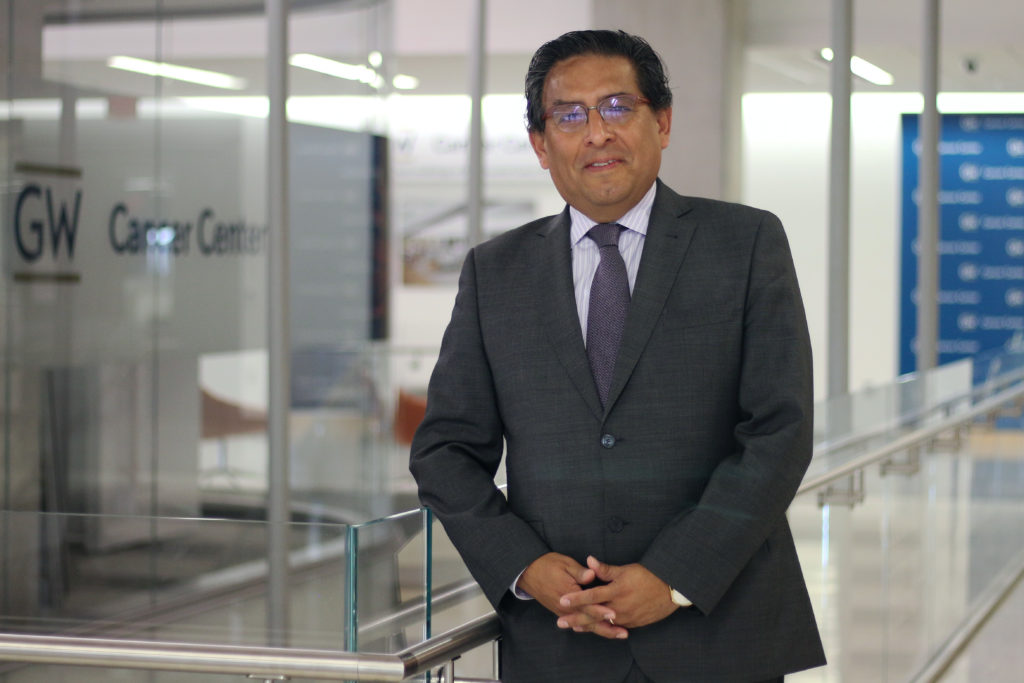Almost two years after opening, the GW Cancer Center is working to establish itself among the top specialized research centers in the country.
The center receives some federal funds, but top researchers in the center said they are seeking a highly coveted grant from the National Cancer Institute that could set the group apart as a nationally recognized research hub. If they succeed and receive the grant, the center can pursue more costly and advanced projects in specialized areas of cancer treatment, researchers said.
Eduardo Sotomayor, the director of the center, said the center has brought in more than 100 researchers who specialize in different types of cancer, giving researchers the chance to collaborate with other scholars with whom they wouldn’t have typically interacted. He said more interdisciplinary projects made possible by the varied researchers in the center are part of what will help the center secure the NCI grant.
“That’s the beauty of our University, that you can create collaboration with different departments and different schools,” Sotomayor said. “It’s more exciting to be working with people who see the cancer problem from a different outlook.”
He said that when the center launched in December 2016, officials first aimed to bring together faculty and staff to jointly create and promote cancer research. Now, with more than 100 researchers at the center, Sotomayor said the center can shift its focus to larger goals, including the NCI grant.
Sotomayor said the center currently obtains most of its funds through the federal government, which is limiting because only 10 to 15 percent of applications will actually receive funding. He said working toward obtaining the NCI grant can take up to a decade because at least 10 percent of a center’s research must be “high impact” to be eligible.
“High impact” research generally refers to findings that have not been explored before, include several citations and are published in an established journal.
He added that the researchers in the center met with an advisory board in June to determine what changes need to be made so the Cancer Center is more qualified for the distinction. He said the board recommended having more interdisciplinary projects that bring multiple schools and departments together for collaboration, working with more experts in specific types of cancer and publishing more often in prestigious academic journals – all of which are current focuses of the center.
The NCI looks for researchers and centers that align with the organization’s mission, which emphasizes collaborative and highly specialized research endeavors, according to the institute’s website.
Sotomayor said the center’s senior leadership team meets once a week to discuss what improvements can be made to the center’s research projects to cultivate the NCI grant. He said currently only 70 cancer centers in the country are NCI-designated, like the Stanford Cancer Institute and Yale Cancer Center.
Sotomayor said the center currently supports 130 researchers across six colleges and 30 departments. He said faculty from the medical school make up more than half of the researchers, and faculty from the Milken Institute School of Public Health make up almost 20 percent.
He said a small percentage of faculty members and researchers from the School of Nursing, the Columbian College of Arts and Sciences and the Children’s National Medical Center also work under the “umbrella” of the center.
Rachel Brem, a professor and the vice chair of radiology and the director of the Breast Imaging and Intervention Center, said the creation of the Cancer Center helped GW separate itself from fellow research universities as a more specialized and expert-based research hub.
“I think we were extremely strong in certain cancers, and now the number of cancers that we are world leaders in treating has expanded significantly,” she said. “It’s really spearheading GW to the forefront of national and international leadership in cancer.”
Brem earned funding last year to work on a cross-disciplinary project focusing on radiology and psychology to evaluate breast cancer detection through 3D imaging.
Robert Siegel, a professor of medicine, said that aside from the center’s NCI pursuits, researchers are still seeking grants from external organizations to fund cancer research within their specialties.
“I’m now applying for funding both from NIH and from commercial interests for money to support my research so that we can continue what we started,” Siegel said.





